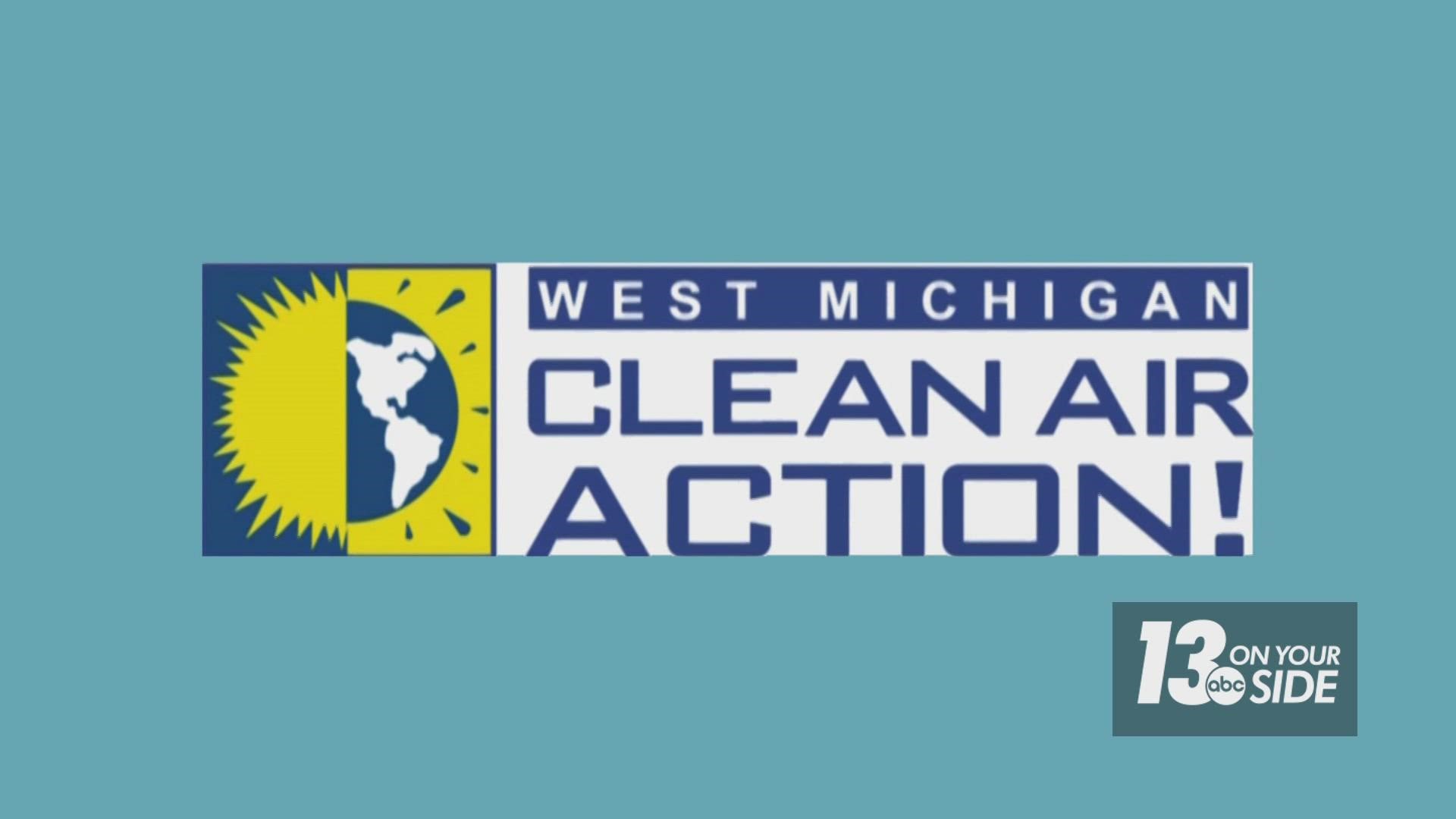GRAND RAPIDS, Mich. — As the weather warms up and we move squarely into summer, it is very likely we will hear about Clean Air Action Days, once known as Ozone Action Days.
Amy Haack is from the West Michigan Shoreline Regional Development Commission and she explained what a Clean Air Action Day is all about. She said it’s when certain air pollutants are forecast to reach unhealthy levels. On these days, the public is asked to take voluntary actions like deferring lawn mowing and limiting car usage to reduce emissions and protect their health.
Beginning in 2009, the program has grown and evolved to announce Action Days when ground level ozone, fine particulate matter, or both, are expected to reach or exceed the unhealthy level for sensitive groups threshold. Since it is possible to have unhealthy levels of fine particulate matter throughout the year, the Clean Air Action program is now year-round.
Haack explained that ozone is a colorless gas that is the major component of smog that lingers at the Earth’s surface. In the upper atmosphere (stratosphere), however, ozone is beneficial, protecting us from the sun’s harmful rays. Ozone is formed in the lower atmosphere as a result of chemical reactions in the presence of certain weather conditions. High temperatures, minimal cloud cover, and southwest winds are prime conditions for ground-level ozone formation in West Michigan.
Sources of pollutants that react in these conditions include vehicles, factories, landfills, industrial chemicals, and numerous small sources such as gas stations, farms, lawn equipment, etc.
The Clean Air Action Program is meant to help. Businesses and industries have been working for years to reduce emissions, with some success, but there are things we can all do to reduce emissions on designated Clean Air Action days:
- Refuel vehicles before or after a Clean Air Action Day. If refueling is necessary, evening hours (after 6 p.m.) are the best time to do so.
- Carpool or use public transit whenever possible. Walk or ride your bicycle for errands.
- Don’t top off the tank. Be sure your gas cap is tightly sealed. If your cap is missing, replace it. Spilled gasoline evaporates directly into the air we breathe.
- Combine trips on Clean Air Action Days. A warm engine produces less emissions than repeated cold engine starts. If possible, drive your lowest emission auto—usually your newest one.
- Delay lawn cutting or other maintenance activities that require gasoline-powered equipment. A gasoline-powered lawn mower produces as much ozone-forming emissions in one hour as 10 hours of driving a car. If you must mow your lawn on a Clean Air Action Day, do so in the evening hours, when the threat of ozone formation is lower.
- Try not to use charcoal lighter fluid, solvent based paint, or degreasers on Clean Air Action Days.
- Drive smoothly, avoiding “jack rabbit” starts that waste fuel and cause more emissions. Don’t idle gasoline engines unnecessarily. Avoid drive-thru services on Clean Air Action Days if possible.
- Consider energy conservation and reduced emissions when purchasing new equipment such as lawn mowers, boats, automobiles, etc.
To learn if a Clean Air Action Day has been called, watch your local news and weather on television. Sign up to receive text messages at http://www.enviroflash.info/signup.cfm or call the Clean Air Action hotline at 1-800-656-0663.
You can also check out the West Michigan Clean Air Coalition website at www.wmcac.org.
►Make it easy to keep up to date with more stories like this. Download the 13 ON YOUR SIDE app now.
If you would like more information about advertising with 13 ON YOUR SIDE, please contact Jeff Olsen at jolsen@wzzm13.com.

